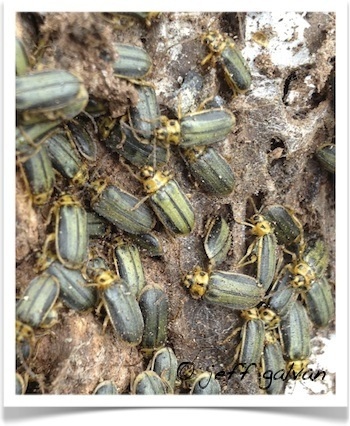Most insects we see do not cause harm to trees and many of them are beneficial to managing tree pest infestations. Insects are rarely the cause of declining tree health (with a few exceptions, such as, the Emerald Ash Borer – which is capable of killing healthy trees). Tree pest population management begins with providing healthy growing conditions and proper tree care.
Pest insects are usually a symptom of poor growing conditions which may include one or more of the following:
 improper watering or drainage
improper watering or drainage- acute climate change
- soil compaction
- pollution
- mechanical damage caused by construction, lawn mowers, weed trimmers, etc.
- and other stress factors that affect a tree’s ability to thrive
The major tree pest populations we are noticing this year are:
Trees most commonly affected are:
- Pine Trees
- Weeping Willow
- Cherry
- Aspens
- Ash
- Black Walnut
Why is early detection is critical for maximizing the chances of an speedy recovery?
Some insect pest can be managed easily with washing with water, soaps, applying horticultural oils and other natural remedies. On the other hand, once some insects have been detected there is no know cure after the tree has been infected.
What is the recommended course of action once insect populations are noticed?
- Identify the tree
- Identify the type of insect to determine if it is beneficial or a possible threat to the health of the tree
- Research available information in books, online or contact a local certified arborist to find out more about the best, if any, pest management practices to apply.
Many pest insects are host specific. Once you have properly identified the tree and have determined what type of insect population is multiplying you are well on your way to finding an answer to your question “What do I do”. Find out more about integrated pest management practices and alternatives to chemical pest control here.